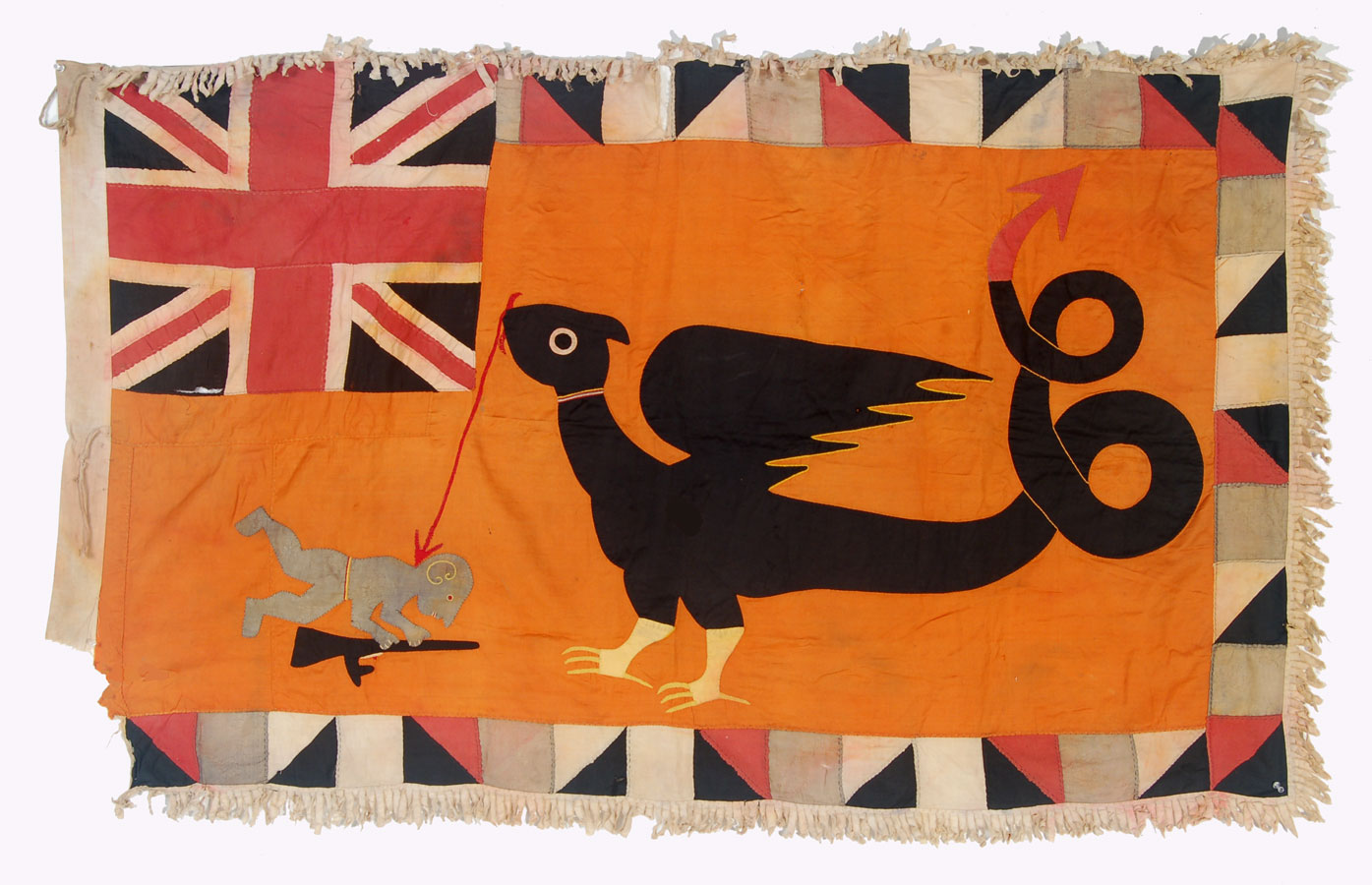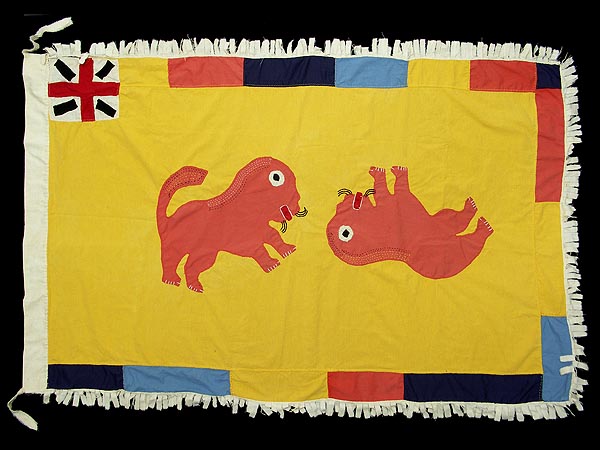The Asafo Flags of the Fante.
Essay
Published Summer 2018.

What is so ensnaring and captivating about the Asafo flags of the Fante people of The Gold Coast (now known as Ghana), is the way in which they are able to tread the lines of both the familiar and unfamiliar to western eyes. Their frequent and dominant use of the colour red is such a staple within British heraldry and insignia; the signature presence of flags within the flags themselves (namely the Union Jack) harks back to a time of afro-euro alliance; the simple and ornamental patchwork patterns that are woven are not unlike those that would be sewn into patchwork by an older relative native to England. These flags, traditionally markers of local militia companies (Asafo) within The Gold Coast, are tightly woven within the social culture, creed and consciousness of the Fante people, and for the past two hundred years (at least) have been used in celebrations, re-affirmations and mourning. Their simple folk-like approach, with its visual energy and creativity makes them seem both respectfully ancient, and innocently honest. Without a doubt, they are so much more than markers of kin or country; they are intimate folk-tales, local proverbs and pride immortalised through the humble needle and thread.

Although the exact origins of the flags remains unclear, the European influence firstly from the Portuguese presence in the 15th century, and later of the British in the 19th century is undeniable. Yet through this, the flags themselves are able to retain aspects that make them inherently African even through their occupation, holding onto a tradition that did indeed exist in some way before these strangers. This is what arguably makes them so special. They are bright, big and bold, designed with visibility at distance in mind, to communicate allegiance, allegory or warning. Some communicate an air of fear; others are well humoured, obscure or sometimes bizarre. But all have their place at the centre of a culture of craft; of segmented pride, but collective celebration of identity. Aside from traditional themes and motifs with the flags, several created within the late 19th and early 20th century reflect the new semi-forced alliance between Ghana and the British Empire. Western weapons and technological advancements of the time became focal points for the flags with airplanes, trains, ships and guns all depicted alongside men both foreign and native. Looking back with today’s eyes, this coercion of the nation and people itself may leave a sour taste in the mouth, but these artefacts created at such a tense time have helped document a collision of two worlds, from the perspective of those affected the most, financially and socially.

Image courtesy of ROM
Beholding an Asafo Flag, even within the constraints of a digital screen, can feel like looking deep into the past of mankind. Were it not for the odd image of a vehicle, it would not be hard to imagine that these flags were discovered as lost treasures within an ancient horde, buried some thousand years ago. Mythical creatures rare and wild are depicted interacting with both man and animal in a way that doesn’t seem in the slightest abnormal. Proverbs, short and sweet (‘A bad cassava can never be boiled’) in local languages or occasionally English, are woven on contrasting backdrops. Shadowy and strange entities are shown in a range of presences and poses. But like the cave paintings of Eurasia, or the Nazca lines of Peru, there is a pure and primitive honesty, untouched by the schools, the vanity and the perfection of western art from the past thousand years. They feel precious; special. They are a celebration of identity, using simple humble materials in a way that has, and will continue to reach generations beyond their own.